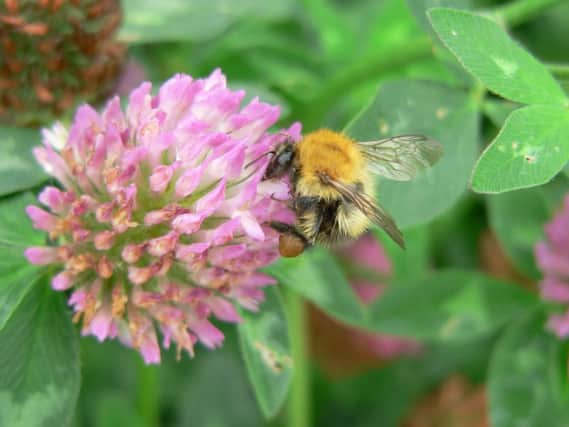Blueprint for revival of ailing pollinators revealed


In the last 80 years, bumblebee populations have crashed. Two species have become nationally extinct and several others have declined dramatically, according to the Bumblebee Conservation Trust.
Yet new research led by the UK’s Centre for Ecology & Hydrology has revealed for the first time that flower-rich habitats are key to enhancing the survival of bumblebee families between years.
Advertisement
Hide AdAdvertisement
Hide AdThe results of what was the largest ever study of its kind on wild bumblebee populations, could help farmers and policy makers to manage the countryside more effectively to provide for pollinators, the researchers said.
Three species of bumblebee were studied by scientists who tracked more than 1,600 families across Buckinghamshire farmland for two years. They used DNA technology and remote sensing to identify, map and track mother, daughter and sister bumblebees and found access to pollen and nectar-rich flowers is crucial to the survival of their populations.
They discovered that colonies produced more daughter queens that survived to the following year when colonies were located within 250-1,000 metres of habitats with high-quality food resources such as spring and summer-flowering plants that provide pollen and nectar throughout the bees’ lifecycle.
In the UK most bumblebee colonies live for less than a year; nests are formed in the spring by a single queen and produce up to a few hundred daughter workers. At the end of the summer new queens are produced which, after mating and hibernation, go on to start new colonies the following spring.
Advertisement
Hide AdAdvertisement
Hide AdHowever, understanding survival between these critical lifecycle stages has proved challenging because in the wild, colonies are almost impossible to find.
The new research overcame these challenges by matching daughter queens to their mothers and sisters using advanced molecular genetics, and estimating the locations of colonies in the landscape from the locations of their workers.
Dr Claire Carvell, senior ecologist at the Centre for Ecology & Hydrology and lead author of the study, said: “Our research demonstrates that the survival of bumblebee families between years is positively linked with habitat quality at a landscape scale. The findings suggest that increasing flowers provided by spring-flowering trees, hedgerow plants and crops across the landscape – in combination with summer flower resources along field edges – can increase the probability of family survival by up to four times.”
Lord Gardiner, Minister for Rural Affairs and Biosecurity, believes the findings will spur on farmers, many of whom already work to support bumblebees.
Advertisement
Hide AdAdvertisement
Hide AdLord Gardiner said: “Thousands of volunteers and farmers across the country alongside businesses, councils and government departments are committed to protecting our pollinator population and this new research provides crucial new intelligence on how they can help.”
Concerted efforts are underway in Yorkshire to aid bumblebees.
Dedicated research at the National Bee Unit based at Sand Hutton, York informs government policy and in the Yorkshire Dales, the Yorkshire Dales Millennium Trust has helped restore damaged hay meadows - a vital source of pollen and nectar for pollinators - that cover an area equivalent to the size of over 725 Wembley football pitches.
In Flaxby near Harrogate, egg producer Chippindale Foods has created 16 acres of bee-friendly habitat on its farms, while the Nidderdale Area of Outstanding Natural Beauty is using a £295,100 grant from the Heritage Lottery Fund to protect 50 species, including bumblebees.